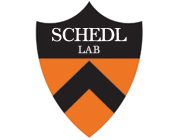Architectural protein Pita cooperates with dCTCF in organization of functional boundaries in Bithorax complex
Publication Year
2017
Type
Journal Article
Abstract
Boundaries in the Bithorax complex (BX-C) of delimit autonomous regulatory domains that drive parasegment-specific expression of homeotic genes. BX-C boundaries have two crucial functions: they must block crosstalk between adjacent regulatory domains and at the same time facilitate boundary bypass. The C2H2 zinc-finger protein Pita binds to several BX-C boundaries, including and To study Pita functions, we have used a boundary replacement strategy by substituting modified DNAs for the boundary, which is located between the and regulatory domains. Multimerized Pita sites block crosstalk but fail to support regulation of (bypass). In the case of , we used a novel sensitized background to show that the two Pita-binding sites contribute to its boundary function. Although is from BX-C, it does not function appropriately when substituted for : it blocks crosstalk but does not support bypass. Mutation of the Pita site disrupts blocking activity and also eliminates dCTCF binding. In contrast, mutation of the dCTCF site does not affect Pita binding, and this mutant boundary retains partial function.
Keywords
Animals,
Mutation,
Transcription Factors,
Repressor Proteins,
Chromatin Immunoprecipitation,
DNA-Binding Proteins,
Gene Expression Regulation, Developmental,
Animals, Genetically Modified,
Drosophila melanogaster,
Protein Interaction Domains and Motifs,
Drosophila Proteins,
Genes, Insect,
Genes, Homeobox,
CCCTC-Binding Factor
Journal
Development
Volume
144
Issue
14
Pages
2663-2672
Date Published
07/2017
ISSN Number
1477-9129
Alternate Journal
Development
PMID
28619827

